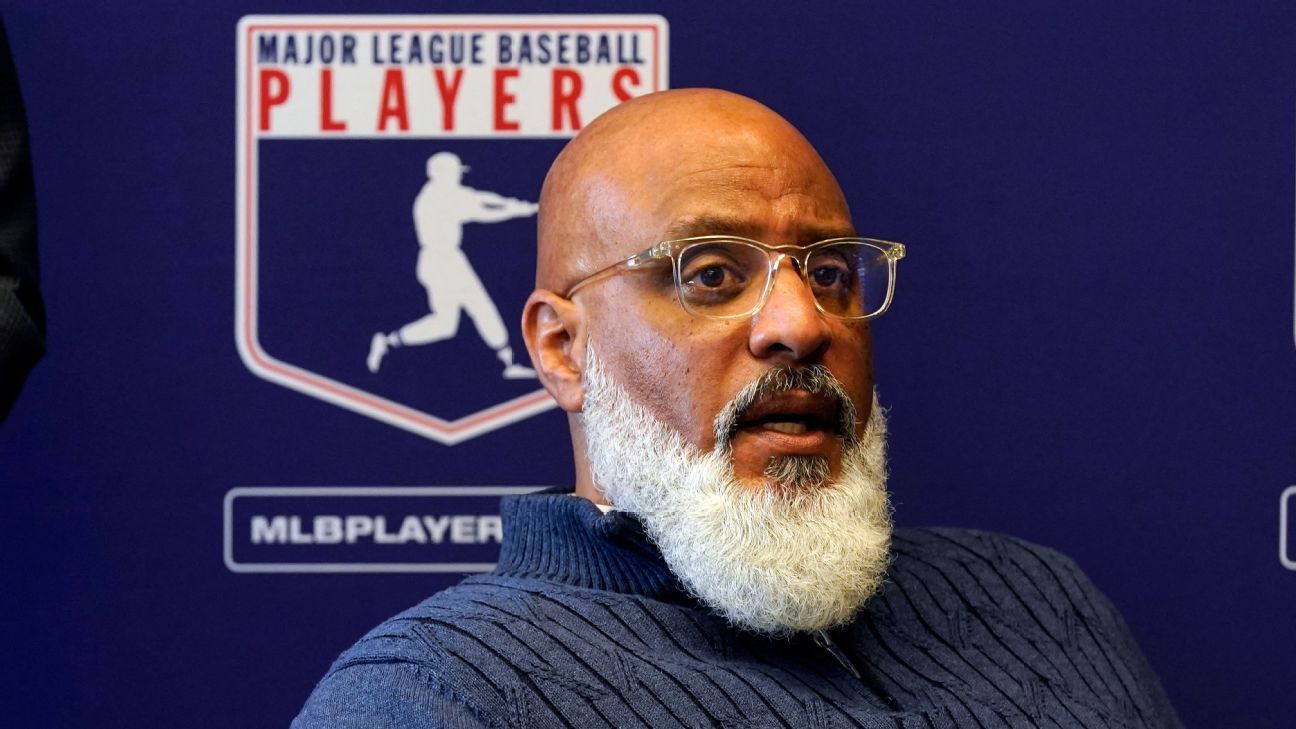SCOTTSDALE, Ariz. — Tony Clark has never had more clout as executive director of the Major League Baseball Players Association.
Clark, 50, helped the union navigate a tumultuous stretch that included a pandemic-shortened 2020 season and a new labor deal in March that not only saved a full 162-game season but also was viewed as at least a modest win for the players and their pocketbooks.
Now, there’s a relative calm during a baseball offseason that hasn’t been seen for a few years.
Baseball fans are probably enjoying that normalcy, but for Clark, there’s not much time to celebrate.
“The preparation for the next agreement never stops,” he said.
Clark was in Arizona on Wednesday afternoon, shuttling between appointments at the MLBPA’s winter meetings. Two days before, the union voted to extend Clark’s contract five more years through 2027, putting him in position to lead players through the entirety of their current labor agreement with owners that expires in December 2026.
“I’m grateful for the opportunity,” Clark said. “Suffice it to say, I’m humbled to be in a position to advocate for the guys.”
Now that the big league financials are settled for the next few seasons, Clark’s attention can turn to more than 5,000 new union members. The sport’s minor league players elected to join the MLBPA in September, paving the way for potentially better pay and playing conditions for those at the lower levels of professional baseball.
Clark — who had a 15-year MLB career — said conditions haven’t improved much for those minor leaguers since he was working his way up to the big leagues in the early 1990s. He said the MLB portion of the union has been supportive because the vast majority of those players have spent time in the minors.
There are numerous issues to address.
“Salary is one of them. That’s the one that jumps off the page and one that’s experienced by guys from top to bottom of the minor league system,” Clark said. “When you get beyond that, there are a number of things: housing, food, training.”
Players with major league contracts average more than $4 million per year and have a $700,000 minimum salary while in the big leagues, but salaries for most minor league players are far lower.
MLB raised weekly minimum salaries for minor leaguers in 2021 to $400 at rookie and short-season levels, $500 at Class A, $600 at Double-A and $700 at Triple-A.
Some have argued that those low salaries have made it hard for professional baseball to attract top athletes. Top collegiate programs in the SEC, ACC, Pac-12, Big 12 and other conferences often have better facilities and travel arrangements than their minor league counterparts.
The NCAA’s new eligibility rules, allowing players to make money on name, image and likeness deals, have also made college sports a more lucrative enterprise.
“We hope that any number of improvements that we’re able to make here, will make it a little more enticing then it might have otherwise been,” Clark said. “As much as it may have been romantic to ride on the buses, and the experiences you get in the minor leagues, going back to ‘Bull Durham,’ the opportunity both at the collegiate level and in other sports are a little different.”
Regarding the recently negotiated big league deal, Clark said the next step is to find out what’s working and what isn’t.
It brought major changes that included expansion of the DH to the National League, increasing the postseason from 10 teams to 12, advertisements on uniforms, a balanced schedule that reduces intra-division play starting in 2023 and measures aimed to incentivize competition and decrease strip-down rebuilding, such as an amateur draft lottery.
Major League Baseball’s 30 teams have appeared to navigate the turbulent COVID-19 era with the sport’s financial resources intact. One example: MLB recently sold its remaining share of a streaming service technology company called BAMTech to the Walt Disney Co. for $900 million.
“I’ll say this — the industry is doing well,” Clark said. “And the industry, I believe, is better when all 30 teams are competing to be the last team standing. We believe that the system is designed to provide that support.”
Clark said he’ll keep a close eye on free agency, which has started with a steady stream of deals.
“We think there’s been a healthiness to the conversations early,” Clark said. “We’re interested to see how that manifests itself over the long haul. But with the game having rebounded already, from a financial standpoint, we remain optimistic that things will continue to progress positively.”
Clark took over as union head in late 2013 following the death of Michael Weiner. Clark also led the union during labor negotiations in 2016 before helping broker the recent deal in March that followed a 99-day lockout.
He said he believes the union’s in as strong a position as it has been in decades. Considering his new five-year deal, it’s apparent the membership agrees.
“I tip my hat to our group,” Clark said. “Their engagement, their involvement, their energy and interest in protecting the game and protecting their fraternity and leaving the game better moving forward, it’s as strong and committed of a group as we’ve seen.”
